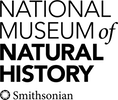Hymenoscyphus pseudoalbidus ~ Chalara fraxinea [anamorphic stage] on Fraxinus excelsior (ash canker or ash dieback; Eschensterben oder Eschentriebsterben) (4807' N 1627' E)

Description:
2011-05-14 Vienna X. district (Hohlweg am Johannesberg, 184 msm Quadrant 7864/3).The spread of ash canker has been observed for some years already - I only noticed them first in 2011, on a young ash at the Hohlweg habitat.Forstschutz aktuell Nr. 37/2006 (article by PDF-Link: T. L. Cech, Eschenschden in sterreich) speculates that climatic stress in combination with several microfungi might be behind it - specifically, Botryosphaeria stevensii, Cryptosphaeria eunomia, Cryptosphaerina fraxini, Gloeosporidiella turgida, Hysterographium fraxini, Lachnella alboviolascens, Libertella fraxinea, & Microdiplodia microsporella).In Forstschutz aktuell Nr. 40 (2007) (PDF-Link: T. L. Cech und U. Hoyer-Tomiczek: Aktuelle Situation des Zurcksterbens der Esche in sterreich), it says that in Poland Chalara fraxinea had been isolated as pathogenic agent, but the authors have doubts about whether this microfungus really could be the source for the epidemic growth of ash canker in Austria; instead, they suggest that some Phytophthora taxa also should be taken into consideration (Ph. cambivora, Ph. cactorum, Ph. citricola, & Ph. gonapodioides).There are two articles in Forstschutz aktuell Nr. 43 (/2008) (PDF-Link: T. L. Cech: Eschenkrankheit in Niedersterreich - neue Untersuchungsergebnisse & PDF-Link: T. Kirisits, M. Matlakova, S. Mottinger-Kroupa und E. Halmschlager: Verursacht Chalara fraxinea das Zurcksterben der Esche in sterreich? suggest that while results still are only preliminary, and that most likely several factors - climatical ones included - should be responsible for the spread of this disease, Chalara fraxinea is likely to have a leading role as pathogene in this case of tree canker. Yet another article to this avail has been published in Forstschutz aktuell Nr. 44 (2008) (PDF-Link: T. Kirisits, M. Matlakova, S. Mottinger-Kroupa and E. Halmschlager: Involvement of Chalara fraxinea in Ash Dieback in Austria), where the assumption now is that Chalara fraxinea were the main and causal pathogenic agent. The next article, Forstschutz aktuell Nr. 45 (2008) (PDF-Link: T. Kirisits: Eschenpathogen Chalara fraxinea nun auch in Krnten nachgewiesen), reporting the spread of the disease to Carinthia (and natural growth of Fraxinus ornus) already takes the causal role of Chalara fraxinea for granted.Two articles in Forstschutz aktuell Nr. 47 (2009) (PDF-Link: T. Kirisits und T. L. Cech: DWF-Erhebungen zum Eschentriebsterben ab 2009 & PDF-Link invalid, unfortunately: T. Kirisits und T. L. Cech: Die Symptome des Eschentriebsterbens) specify that the ash canker - or ash dieback to use the term of the article - is (quote) 'caused by the ascomycete fungus Hymenoscyphus albidus and its anamorphic stage Chalara fraxinea' (my emphasis), and the symptoms are described, in German: "Weies Stengelbecherchen (H. albidus) bzw. dessen ungeschlechtliches Stadium Ch. fraxinea'.The article in Forstschutz aktuell Nr. 48 (2009) (PDF-Link: T. Kirisits und T. L. Cech: Beobachtungen zum sexuellen Stadium des Eschentriebsterben-Erregers Chalara fraxinea in sterreich) finally is dedicated to the sexual stage of Ch. fraxinea (which has been reported since 1850 in Austria and isn't even rare - it seems that several factors lead to a spread of the disease recently) a short description of the life cycle of this fungus is given:- the sexual stage Hymenoscyphus albidus produces ascospores from june till october, which infect leaves and cause them to wither;- come next spring, young sprouts begin to wither early in the year already (in mid to late spring, the shot above shows this stage, taken in may as indicated), or buds do not even grow - the trees die before sprouting - this is the stage of Chalara fraxinea which is fruiting on dead material of ash, its spores beginning the cycle anew come next spring.However, the article also says that Kowalski und Holdenrieder (2009) suggest alternative explanations - that either Chalara fraxinea were a non-native, invasive new species, which is morphologically identical to H. albidus, or that a hybrid with a foreign species were the pathogen; and the authors of this article, Kirisits and Cech, concede that some genetic change indeed is likely even though climatical factors also may play a decisive role in the spread of the disease.The most recent article in Forstschutz aktuell Nr. 51 (2011) (PDF-Link: T. Kirisits: Eschentriebsterben in Vorarlberg und Tirol finally specifies (along with a description of its spreading to both Tyrol and Vorarlberg) that it is Hymenoscyphus pseudoalbidus (Falsches Weisses Stengelbecherchen) and its anamorphic stage Chalara fraxinea which is morphologically identical to H. albidus and only genetically different. While it is unclear whether H. pseudoalbidus is a foreign, introduced species or a mutation of the native one, it is indeed clear that this microfungus is indeed the pathogenic agent responsible for ash dieback, and that it is highly invasive; H. albidus is harmless and only living saprobiontic or possibly also endophytic on ash, without causing severe damage to the tree, or so I would interpret the article.A very short summary of all this is given in some articles published recently in the web: as the disease seems to spread even more in 2011 the ash dieback made the news under the name of "Eschensterben":ORF science: Pilz bedroht europaweit EschenORF Salzburg: Eschensterben in Salzburg plus this articleThe years 2009 and 2010 were very wet years, and wet conditions are promoting the growth of this fungus: possibly, what we're seeing in 2011 (which so far has been extremely dry) is an abundance of growth of the fungus in the last couple of years.
Included On The Following Pages:
- Life (biota)
- Cellular
- Eukaryota (eukaryotes)
- Opisthokonta (opisthokonts)
- Nucletmycea
- Fungi (mushrooms, lichens, molds, yeasts and relatives)
- Dikarya
- Ascomycota (sac fungi)
- Leotiomycetes
- Helotiales
- Helotiaceae
- Hymenoscyphus
- Hymenoscyphus fraxineus (Ash Dieback)
This image is not featured in any collections.
Source Information
- license
- cc-by-nc-sa
- copyright
- HermannFalkner/sokol
- photographer
- HermannFalkner/sokol
- original
- original media file
- visit source
- partner site
- Flickr Group
- ID


